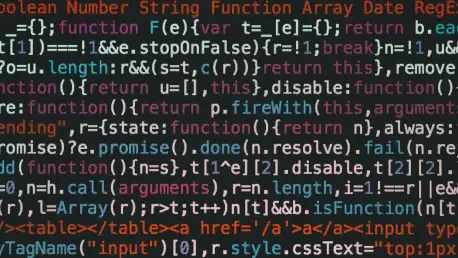Allow me to introduce Simon Glairy, a renowned expert in insurance and Insurtech, with a deep focus on risk management and AI-driven risk assessment. With years of experience in navigating the complexities of fraud detection and technology integration, Simon offers a unique perspective on how insurers like Zurich are revolutionizing their approach to combat fraud. In this engaging conversation, we explore the groundbreaking partnership between Zurich Insurance and Quantexa in the UK, the evolution of real-time fraud detection, the inner workings of cutting-edge AI platforms, and the broader impact on customers and the industry. Simon also sheds light on how technology helps insurers stay ahead of ever-adaptable fraudsters and the role of diverse data sources in building robust defenses.
Can you share your insights on Zurich Insurance’s decision to partner with Quantexa in the UK and what makes this collaboration significant?
Absolutely, Olivia. Zurich’s move to partner with Quantexa marks a pivotal moment in the UK insurance landscape. Being the first insurer to adopt this technology in the region shows Zurich’s commitment to staying at the forefront of fraud prevention. Quantexa’s expertise in decision intelligence and their ability to connect vast, disparate data sources made them an ideal partner. This collaboration isn’t just about technology—it’s about setting a new standard for how insurers can proactively tackle fraud while maintaining efficiency. It gives Zurich a competitive edge by enabling faster, more accurate detection of suspicious claims, which ultimately benefits both the company and its honest customers.
What factors do you think positioned Quantexa as the right choice for Zurich in this initiative?
Quantexa stands out because of their innovative approach to data integration and AI-driven analysis. Their Decision Intelligence platform can pull together information from multiple sources—think industry databases, open-source records, and internal claims data—and analyze it in real time. This isn’t just about crunching numbers; it’s about uncovering hidden connections that human analysts might miss. For Zurich, this means a more comprehensive view of potential risks. Quantexa’s focus on dynamic visualization and actionable insights also aligns perfectly with the need for claims handlers to make quick, informed decisions. It’s a game-changer in terms of both depth and speed.
How has the landscape of fraud detection evolved for insurers like Zurich over recent years?
Fraud detection has come a long way, especially for forward-thinking insurers like Zurich. A few years ago, much of the process relied on manual checks and static databases, which could be slow and prone to gaps. Over the past three years, Zurich has been leveraging real-time detection, and that alone has allowed them to spot fraudulent claims worth hundreds of thousands of pounds daily. The shift to real-time systems meant they could flag issues as claims were being processed, rather than after the fact. Now, with platforms like Quantexa’s, the evolution is even more striking—there’s a focus on industry-wide data sharing and predictive analytics, which takes fraud detection to a whole new level of sophistication.
Can you elaborate on how effective real-time fraud detection has been for Zurich based on their recent track record?
Certainly. Zurich’s adoption of real-time fraud detection over the past few years has been incredibly impactful. They’ve reported detecting fraudulent claims equivalent to about £260,000 every single day. That’s a staggering amount and a testament to how powerful real-time systems can be in identifying suspicious activity before payouts are made. It’s not just about the financial savings; it’s also about building trust with honest customers by ensuring their premiums aren’t inflated by fraud. This track record shows that real-time detection isn’t just a buzzword—it’s a proven tool that’s reshaping how insurers manage risk.
What specific advancements does the Quantexa platform bring compared to earlier fraud detection methods Zurich used?
The Quantexa platform builds on Zurich’s existing real-time capabilities by introducing a broader and deeper scope of data analysis. Earlier methods, while effective, often relied on limited data sets or manual cross-referencing. Quantexa’s system integrates multiple sources—like the Claims and Underwriting Exchange database and even open-source corporate records—into a single, cohesive analysis. It also offers dynamic visualizations and guidance ratings, which help claims handlers see connections and assess risks instantly. This is a significant leap from older, more fragmented approaches, as it automates and enhances decision-making with a level of precision that wasn’t possible before.
Could you walk us through how a platform like Quantexa’s Decision Intelligence operates in a real-world claims scenario?
Of course. When a claim comes in, whether through an online form or over the phone, the claims handler inputs the details as usual. Behind the scenes, the Quantexa platform kicks into gear, pulling data from various sources instantly. It looks at things like the claimant’s history, related addresses, associated businesses, and even legal representatives tied to the claim. The system then creates a visual map of these connections, flagging any overlaps with other claims, policies, or known fraud indicators. It also provides a guidance rating and risk scenarios to the handler, suggesting whether the claim might be suspicious and needs further investigation. It’s like having a super-smart assistant that spots patterns humans might overlook.
How does this technology ultimately benefit Zurich’s customers, especially those with legitimate claims?
The benefits for customers are twofold. First, for honest claimants, the platform ensures faster processing when a claim gets a clean rating. There’s no unnecessary delay because the system quickly confirms there’s no cause for concern. Second, it protects all customers by reducing the financial impact of fraud. When fraudulent claims are caught early, it helps keep premiums lower for everyone. Essentially, this technology acts as a shield, safeguarding genuine customers from the ripple effects of fraud while streamlining their experience with the claims process.
Fraudsters are constantly adapting their tactics. How does a platform like Quantexa help insurers stay one step ahead?
Fraudsters are indeed crafty, always finding new loopholes. What makes Quantexa’s platform so effective is its ability to analyze data in real time across a wide spectrum of sources. It doesn’t just look at isolated claims—it connects the dots across industry-wide intelligence, like the Insurance Fraud Register, to spot patterns of behavior that might indicate fraud rings or repeat offenders. Plus, the AI component learns and adapts, meaning it can pick up on emerging tactics. This proactive approach, combined with the sheer volume of data it processes, makes it incredibly tough for fraudsters to fly under the radar.
What role does open-source data, such as records from Companies House, play in enhancing fraud detection?
Open-source data is a goldmine for fraud detection because it adds layers of context that internal or industry-specific data might not capture. For instance, records from Companies House can reveal connections between individuals, businesses, or even shell companies involved in a claim. This kind of information helps paint a fuller picture of potential risks—like whether a claimant is tied to a questionable entity. It’s invaluable for spotting inconsistencies or hidden relationships that could point to fraud. However, the challenge lies in ensuring the data is accurate and relevant, as open-source information can sometimes be outdated or incomplete, requiring careful validation.
Looking ahead, what is your forecast for the future of AI-driven fraud detection in the insurance industry?
I’m optimistic about where this is headed. AI-driven fraud detection is only going to get smarter and more integrated. We’ll likely see even greater collaboration across the industry, with more insurers sharing data in real time to create a unified front against fraud. The technology itself will become more predictive, not just reactive, using machine learning to anticipate fraudulent behavior before it happens. I also expect AI to become more accessible, even for smaller insurers, as costs come down and platforms become more user-friendly. Ultimately, the focus will be on balancing robust fraud prevention with a seamless customer experience, ensuring that genuine claimants aren’t caught in overly stringent nets. It’s an exciting time for the industry.









